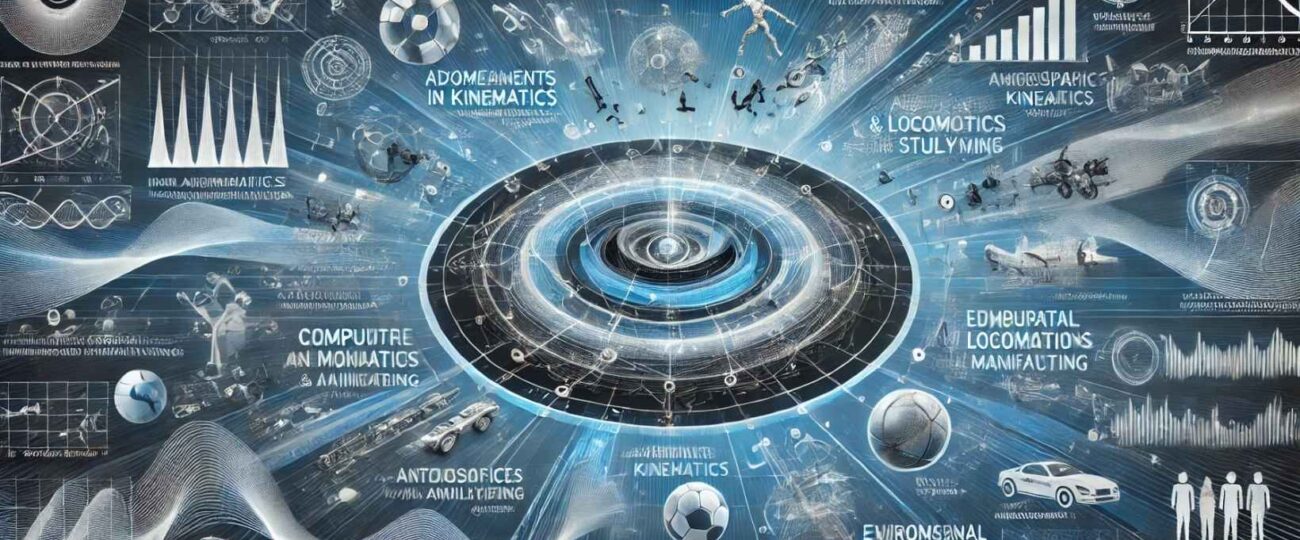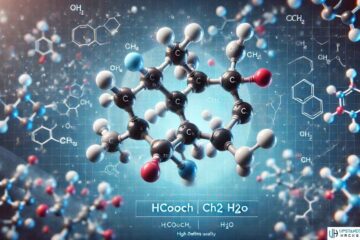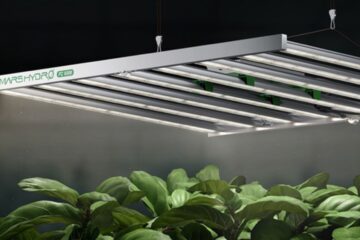Kinematics, the branch of mechanics that studies the motion of objects without considering the forces causing the motion, remains a vibrant field of research. As we step into 2025, several emerging and intriguing topics offer ample opportunities for exploration. Below is a comprehensive guide to some of the best topics for kinematics research assignments, ensuring you have compelling ideas for your next study.
- Advancements in Robotic Kinematics
- Biomechanics and Human Motion Analysis
- Kinematic Studies in Athletic Performance
- Aerospace Applications
- Automotive Kinematics
- Computer Graphics and Animation
- Sports Engineering
- Kinematics in Virtual Reality (VR)
- Animal Locomotion Studies
- Kinematic Analysis in Manufacturing
- Medical Applications
- Kinematic Analysis in Environmental Monitoring
- Future Directions in Kinematics Research
Advancements in Robotic Kinematics
Kinematic Modeling of Humanoid Robots
The quest to create robots that mimic human movements has led to significant advancements in kinematic modeling. Research in this area focuses on developing algorithms that allow humanoid robots to perform complex tasks with human-like precision and fluidity.
Innovations in Robotic Arm Articulations
Robotic arms are integral in industries like manufacturing and healthcare. Recent studies aim to enhance their dexterity and range of motion, enabling more intricate operations and improving efficiency in tasks such as assembly and surgery.
Biomechanics and Human Motion Analysis
Gait Analysis in Rehabilitation
Understanding human gait is crucial for developing effective rehabilitation programs. Kinematic studies in this domain analyze the intricacies of walking patterns, aiding in the design of personalized therapeutic interventions for individuals recovering from injuries.
Kinematic Studies in Athletic Performance
Athletes continually seek to optimize their performance. By examining the kinematics of various sports movements, researchers can provide insights into technique improvements, injury prevention, and equipment design tailored to enhance athletic output.
Aerospace Applications
Kinematics of Unmanned Aerial Vehicles (UAVs)
The proliferation of UAVs has spurred research into their flight dynamics. Kinematic analysis assists in improving navigation systems, stability, and control mechanisms, ensuring safer and more efficient drone operations.
Orbital Mechanics and Satellite Trajectories
Satellites play a pivotal role in communication and observation. Studying their kinematics involves calculating precise trajectories and understanding orbital behaviors to maintain functionality and avoid collisions in space.
Automotive Kinematics
Vehicle Dynamics and Stability Control
Ensuring vehicle stability is paramount for safety. Research in automotive kinematics examines how vehicles respond to various driving conditions, leading to the development of advanced stability control systems that prevent accidents.
Crash Analysis and Safety Mechanisms
In the event of a collision, understanding the kinematics involved can inform the design of better safety features. Studies focus on how occupants and vehicles behave during crashes, contributing to innovations in airbags, seatbelts, and structural integrity.
Computer Graphics and Animation
Motion Capture Technologies
In the realm of digital media, capturing realistic motion is essential. Kinematic research has led to sophisticated motion capture systems that record human movements, translating them into lifelike animations for films and video games.
Kinematic Algorithms in Animation
Beyond capturing motion, creating believable animations requires complex algorithms. Research focuses on developing kinematic algorithms that ensure animated characters move in ways that are physically plausible and visually appealing.
Sports Engineering
Equipment Design Optimization
The design of sports equipment can significantly impact performance. Kinematic analysis helps in understanding how athletes interact with their gear, leading to designs that enhance efficiency, comfort, and safety.
Motion Analysis in Competitive Sports
Detailed motion analysis provides insights into the techniques of top athletes. By studying these movements, coaches and engineers can develop training programs and equipment that replicate and enhance elite performance.
Kinematics in Virtual Reality (VR)
Real-Time Motion Tracking
For VR experiences to be immersive, real-time motion tracking is essential. Research in this area focuses on developing systems that accurately capture and replicate user movements within virtual environments.
Enhancing User Experience through Kinematic Feedback
Providing users with tactile feedback enhances the realism of VR. Studies explore how kinematic data can be used to simulate physical sensations, making virtual interactions more engaging and intuitive.
Animal Locomotion Studies
Comparative Kinematics of Different Species
By studying the movement patterns of various animals, researchers gain insights into the principles of locomotion. This knowledge can inspire the design of bio-inspired robots and contribute to the fields of biology and ecology.
Applications in Bio-Inspired Robotics
Animal kinematics often serve as blueprints for robotic designs. By mimicking the efficient movement strategies found in nature, engineers can develop robots capable of navigating complex environments.
Kinematic Analysis in Manufacturing
Optimization of Assembly Line Robotics
In manufacturing, efficiency is key. Kinematic studies help in optimizing the movements of robotic arms on assembly lines, reducing cycle times, and increasing production rates.
Precision in CNC Machine Movements
Computer Numerical Control (CNC) machines rely on precise movements to create components. Research focuses on enhancing the kinematic accuracy of these machines, ensuring high-quality outputs in manufacturing processes.
Medical Applications
Kinematic Modeling in Prosthetics Design
Designing prosthetics that mimic natural movement requires detailed kinematic modeling. Research in this area aims to create prosthetic limbs that offer users greater mobility and comfort.
Joint Movement Analysis for Surgical Planning
Understanding the kinematics of joint movements aids surgeons in planning procedures. By analyzing these movements, medical professionals can develop strategies that preserve or restore function.
Kinematic Analysis in Environmental Monitoring
Tracking Ocean Currents and Their Impacts
Understanding the movement of ocean currents is crucial for environmental monitoring. Kinematic analysis aids in modeling these currents, providing insights into climate patterns, marine ecosystems, and pollution dispersion. By studying the trajectories and velocities of water masses, researchers can predict the spread of contaminants and assess the health of marine habitats.
Future Directions in Kinematics Research
Integration with Artificial Intelligence
The fusion of kinematics and artificial intelligence (AI) is paving the way for innovative solutions across various fields. AI algorithms can analyze complex motion patterns, leading to advancements in robotics, biomechanics, and autonomous systems. This integration enhances the ability to model, predict, and control movements with unprecedented precision.
Potential Interdisciplinary Collaborations
Kinematics is increasingly intersecting with disciplines such as computer science, biology, and environmental science. Collaborative research efforts are leading to breakthroughs like bio-inspired robotic systems, advanced motion capture technologies, and improved environmental monitoring methods. These interdisciplinary approaches are expanding the horizons of kinematic applications.
Conclusion
Kinematics continues to be a dynamic and integral field of study, with applications spanning from robotics to environmental science. The topics highlighted offer a glimpse into the diverse research opportunities available in 2025. By exploring these areas, researchers can contribute to technological advancements and deepen our understanding of motion in various contexts.
FAQs

What is kinematics?
Kinematics is the branch of mechanics that studies the motion of objects without considering the forces causing the motion.
How is kinematics applied in robotics?
In robotics, kinematics is used to model and control the movement of robots, ensuring precise and accurate operations.
What role does kinematics play in biomechanics?
Kinematics helps analyze human and animal movements, aiding in areas like rehabilitation, sports science, and prosthetics design.
How does kinematic analysis benefit environmental monitoring?
Kinematic analysis assists in understanding the movement of natural elements like water currents and glaciers, which is vital for environmental assessments.
What are the future trends in kinematics research?
Future trends include integrating kinematics with artificial intelligence and fostering interdisciplinary collaborations to develop innovative solutions across various fields.
See Also: The Ultimate List: Top 130 Controversial Debate Topics










